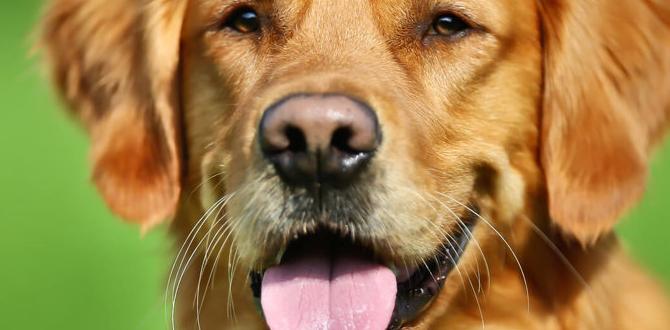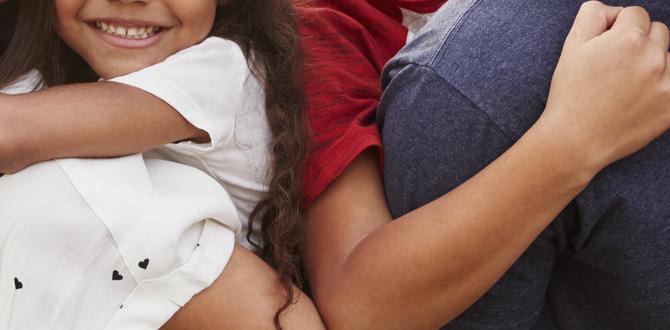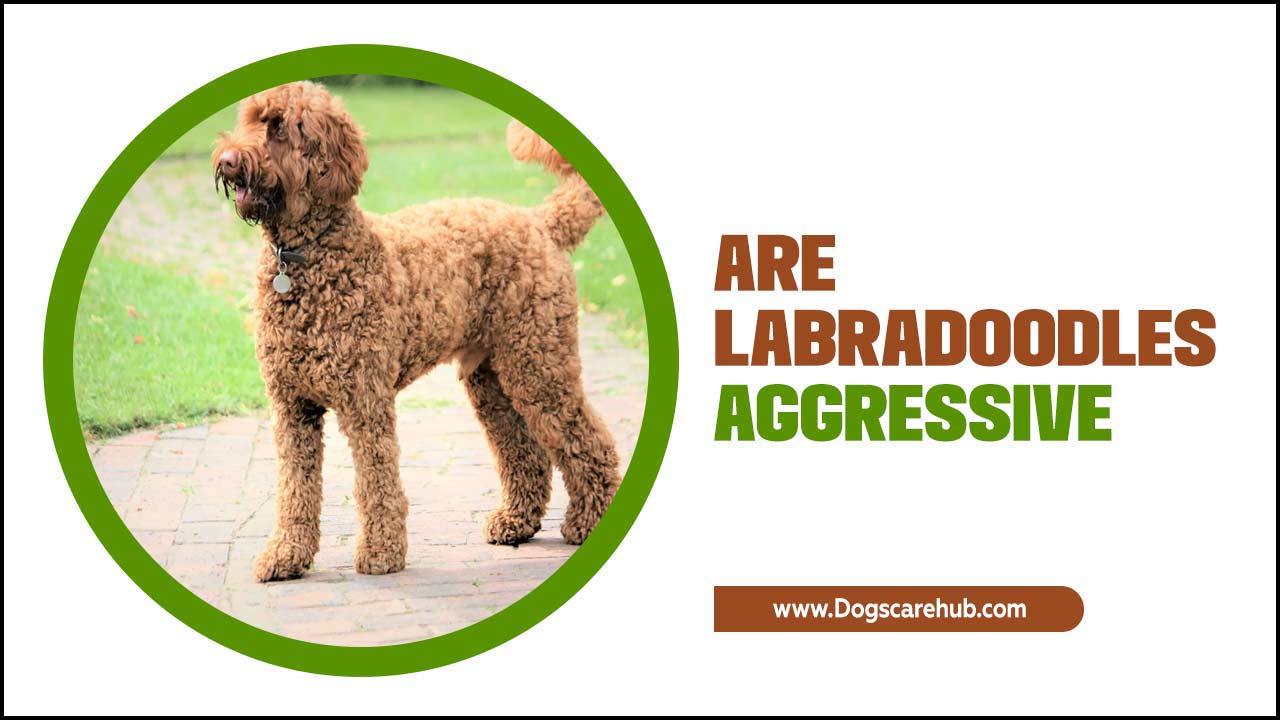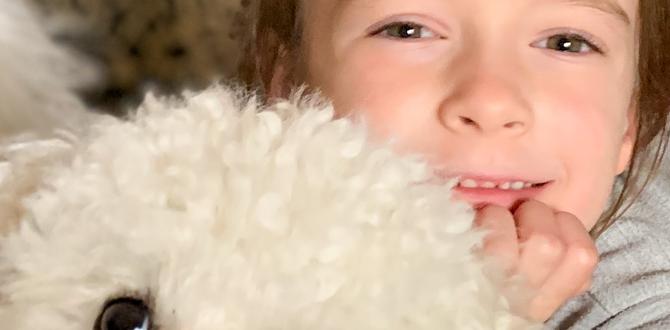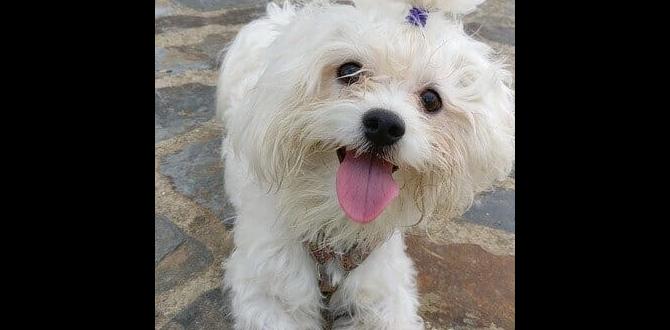Does your dog growl at strangers? Does he bark fiercely when meeting new dogs? These signs could mean your furry friend has fear aggression. It can be tough to watch your beloved pet act out in fear. But don’t worry—many dogs can learn to feel safe and calm. With the right help, even the most fearful dogs can change their ways.
Imagine a dog named Max. He used to hide behind his owner every time someone approached. Max would bark endlessly at the mailman. But after some training, he learned to greet visitors happily. This change made both Max and his owner feel much better. Isn’t it amazing how much a little guidance can do?
In this article, we will explore ways to fix dog fear aggression. We will share simple tips to help your dog overcome fear and build confidence. Just like people, dogs can learn to trust. Let’s dive into how it’s possible to help your pup feel secure in any situation!
How To Fix Dog Fear Aggression: Effective Training Tips Fear Aggression In Dogs Can Be A Serious Behavioral Issue That Affects Their Well-Being And The Safety Of Those Around Them. Understanding And Fixing This Problem Requires Patience, Knowledge, And A Strategic Approach. Here Are Several Techniques You Can Implement To Help Alleviate Your Dog’S Fear Aggression And Create A More Harmonious Environment. Understanding Fear Aggression Fear Aggression Occurs When A Dog Feels Threatened Or Frightened, Leading To Defensive Behavior. This Can Manifest As Growling, Barking, Lunging, Or Even Biting When They Perceive A Situation Or Stimuli As Dangerous. Identifying The Triggers For Your Dog’S Fear Is Crucial In The Healing Process. Steps To Fix Dog Fear Aggression 1. **Identify Triggers** The First Step In Fixing Dog Fear Aggression Is To Observe And Identify What Specifically Triggers Your Dog’S Fearful Response. Common Triggers Include Other Dogs, Strangers, Loud Noises, Or Unfamiliar Environments. Keeping A Journal Of These Incidents Can Help. 2. **Create A Safe Space** Provide A Safe And Comfortable Environment Where Your Dog Can Retreat When Feeling Anxious. This Might Include A Quiet Room Or A Cozy Crate. Ensuring They Have A Safe Haven Can Help Reduce Overall Anxiety Levels. 3. **Positive Reinforcement Training** Utilize Positive Reinforcement Techniques To Reward Your Dog For Calm Behavior. Use Treats, Praise, Or Toys When Your Dog Remains Composed In The Presence Of Their Triggers. This Builds Positive Associations And Reduces Aggressive Responses. 4. **Desensitization** Gradually Expose Your Dog To Their Fear Triggers At A Distance Where They Feel Safe. Over Time, You Can Slowly Decrease The Distance, Allowing Your Dog To Become Accustomed To The Situation Without Feeling Threatened. Pair This Exposure With Positive Reinforcement. 5. **Counterconditioning** Change Your Dog’S Emotional Response To The Fear Trigger Through Counterconditioning. For Example, If Your Dog Reacts To Other Dogs, Try Feeding Them Treats When They See Another Dog In The Distance, Helping Them Associate Other Dogs With Positive Experiences. 6. **Seek Professional Help** If Your Dog’S Fear Aggression Is Severe, Consider Consulting A Professional Dog Trainer Or Behaviorist. They Can Provide Tailored Strategies And Support To Address The Issue Effectively. 7. **Stay Calm And Consistent** As A Pet Owner, Your Behavior Can Greatly Influence Your Dog’S Reactions. Remain Calm And Consistent In Your Responses, Avoiding Any Negative Reinforcement That Can Escalate Fear And Aggression. Conclusion Fixing Dog Fear Aggression Is A Process That Requires Time, Patience, And Commitment. By Understanding Your Dog’S Triggers, Creating A Safe Environment, And Using Positive Training Methods, You Can Help Your Furry Friend Overcome Their Fears And Improve Their Behavior. Always Remember That The Goal Is To Foster A Trusting Bond With Your Dog, Making Them Feel Secure In Their Environment.

Understanding and Fixing Dog Fear Aggression
Many dogs show fear aggression as a response to stress. This behavior can lead to anxiety or even biting. To help your dog feel safe, start with calm, low-energy environments. Gradually expose them to their fears. Using positive reinforcement builds their confidence. Did you know that socializing puppies can prevent future fear issues? Consistent training is key. With patience and love, you can fix dog fear aggression and enjoy peaceful walks together.Understanding Fear Aggression in Dogs
Definition and characteristics of fear aggression. Common causes and triggers of fear aggression in dogs.Fear aggression is when a dog reacts aggressively due to fear. This can happen when they feel threatened or scared. Dogs show this behavior through growling, barking, or even biting. It’s important to recognize the signs early to help them. Common causes include:
- Past abuse or trauma
- New environments or noises
- Strange people or animals
- Lack of socialization
What are the signs of fear aggression in dogs?
Signs of fear aggression can include growling, snapping, or showing teeth. A scared dog might also hide or try to escape. Understanding these signs helps keep everyone safe.
Identifying Signs of Fear Aggression
Behavioral indicators of fear aggression. Situations that provoke fear aggressive responses.Dogs can show fear aggression in different ways. Some common signs to look for include:
- Growling or barking
- Show of teeth
- Rigid body posture
- Backing away from people or situations
- Avoiding eye contact
Certain situations can trigger this fear. For instance, loud noises or strange people may make dogs react. The goal is to understand these signs and help your dog feel safe.
What are behavioral indicators of fear aggression?
Fear aggression shows when a dog feels scared and wants to protect itself. Signs include growling, lunging, and hiding. Recognizing these signs is important for helping them feel better.
Creating a Safe Environment for Your Dog
Importance of a stable and trusting home setting. Steps to minimize stress and anxiety for your dog.A stable home is very important for your dog. A calm and loving space helps them feel safe. This can reduce their fear and anxiety. You can take these steps to create a comfortable setting:
- Keep a routine for feeding and walks.
- Provide a quiet area for your dog to relax.
- Use soft toys to make them feel secure.
- Limit loud noises or sudden movements.
These steps can help build trust and lower stress. A happy dog is less likely to show fear aggression.
How can I make my dog feel safe at home?
To help your dog feel safe, create a stable routine, offer cozy spaces, and keep an eye on stressors. Give them time to adjust. Positive reinforcement also helps build confidence.
Desensitization and Counter-Conditioning Techniques
Explanation of desensitization strategies. How counterconditioning can help alter fear responses.Dogs can feel scared in certain situations. Desensitization helps them get used to things that frighten them. You slowly show your dog what makes them scared, but at a safe distance. Over time, they learn the noise or object is not harmful. Counterconditioning changes their bad feelings into good feelings. For example, give treats when they see something scary. This helps your dog feel happy instead. Here are some techniques:
- Start with low-level triggers.
- Use rewards like treats or praise.
- Be patient and go slow.
How can I help my dog feel less afraid?
Start by using desensitization and counterconditioning techniques to change their reactions. This approach builds their confidence and reduces fear over time.
Positive Reinforcement Strategies
The role of rewards in managing fear aggression. Examples of positive reinforcement techniques.Using rewards can work wonders in tackling fear aggression in dogs. Positive reinforcement helps your pup associate good things with small fears. A tasty treat or a favorite toy can shift their focus from scary things to happy moments. For example, when your dog sees another dog, give them a treat for staying calm. This builds good vibes instead of anxiety.
| Technique | Description |
|---|---|
| Treat Training | Reward with treats when your dog shows calm behavior. |
| Clicker Training | Use a click sound followed by a reward for positive actions. |
| Playtime | Engage in fun activities as a reward for bravery. |
So remember, when your pup acts brave, celebrate it! Who knew managing fear could be this fun?
Socialization Strategies for Fearful Dogs
Importance of socialization for reducing fear aggression. Effective socialization exercises and scenarios.Helping a fearful dog requires careful socialization. This process is important to reduce fear and build confidence. Socializing helps dogs learn to trust people and other animals. Start with fun exercises that are safe and enjoyable. Some effective strategies include:
- Slow introductions to new people and pets.
- Exposing them to different sounds and environments.
- Using treats to reward brave behavior.
These activities encourage your dog to feel secure and less afraid. Consistency is key. Regular socialization will help your dog blossom!
What are the benefits of socializing a fearful dog?
Socializing a fearful dog improves their behavior and builds trust. It helps them learn that the world is safe. Social dogs are happier and more relaxed. They can also enjoy new experiences with less fear.
Monitoring Progress and Adjusting Strategies
How to track changes in behavior and aggression levels. When to revise training approaches based on your dog’s response.Tracking your dog’s behavior is like being a detective, minus the trench coat. Keep a diary to note any changes in aggression. Spotting trends helps you know what’s working. If your pup is barking less or becoming calmer, celebrate with a treat! But if things worsen, it might be time to switch gears. Adjust your training methods when needed, like trying a new game or technique. Remember, sometimes all it takes is a little change to make things better!
| Behavior Change | Action Needed |
|---|---|
| Less barking | Keep up the current strategy! |
| Increased aggression | Consider changing your approach. |
Addressing Owner’s Role in Managing Fear Aggression
How owner behavior influences dog anxiety and fear. Techniques for owners to remain calm and assertive during training.Dog owners have a big impact on how their pets feel. If you are calm, your dog can relax too. Use strong body language and speak in a clear tone. For training, practice these tips:
- Stay calm and confident.
- Use a gentle voice.
- Show clear signals, like hand gestures.
- Reward good behavior with treats.
This helps your dog trust you. Dogs can sense your emotions, so staying positive is key. Remember, patience is important to help your dog feel safe.
How does owner behavior influence dog anxiety and fear?
Owner behavior affects a dog’s mood greatly. If an owner shows fear, the dog may also feel scared. Staying calm is essential for better training.
Conclusion
To fix dog fear aggression, we must understand our dog’s feelings. We can help them feel safe and confident. Positive training methods, patience, and consistency are key. Always reward good behavior. If needed, seek help from a trainer. Remember, change takes time, so stay committed. For more tips, keep reading and learn how to build a happier, calmer pet!FAQs
Sure! Here Are Five Related Questions On The Topic Of Fixing Dog Fear Aggression:Sure! Here are five questions we can think about when we want to help a scared dog: 1. What makes a dog feel scared? 2. How can we help our dog feel safe? 3. What signs show our dog is scared? 4. How do we train our dog to feel better? 5. When should we ask a dog expert for help? These questions can help us understand how to fix fear aggression in dogs.
Sure! Please provide the question you’d like me to answer.
What Are The Common Signs Of Fear Aggression In Dogs, And How Can I Identify Them In My Pet?Common signs of fear aggression in dogs include growling, barking, and showing teeth. You might notice your dog backing away or wanting to hide. They may also stiffen their body or have their ears back. If your dog is scared, it might snap at people or other pets. Pay attention to these signs so you can help your dog feel safer.
What Are Effective Training Techniques To Help A Dog Overcome Fear Aggression Towards Strangers Or Other Animals?To help a dog overcome fear aggression, you can use positive reinforcement. This means giving your dog treats and praise when they stay calm around strangers or other animals. You should also practice slowly introducing new people and pets in a safe way. Always stay calm yourself, as dogs can sense your feelings. With patience and practice, your dog can learn to feel safe and confident.
How Can I Create A Safe And Supportive Environment At Home To Reduce My Dog’S Anxiety And Fear Triggers?To create a safe home for your dog, start by giving them a quiet place to relax. You can use a cozy bed or a crate with their favorite blanket. Make sure to keep loud noises, like yelling or sudden sounds, to a minimum. Spend time with your dog and give them lots of love and attention. Also, keep scary things, like fireworks or strange people, away from your dog as much as possible.
What Role Does Socialization Play In Addressing Fear Aggression, And How Can I Safely Expose My Dog To New Experiences?Socialization helps dogs learn to be calm around new things. It teaches them that new people and places are safe. To safely expose your dog to new experiences, start slowly. Take your dog to quiet parks or introduce them to friendly people. Always give treats and praise when your dog stays calm. This helps them feel good about new situations!
When Should I Consider Seeking The Help Of A Professional Dog Trainer Or Behaviorist For My Dog’S Fear Aggression Issues?You should think about getting help from a dog trainer or behaviorist if your dog is very scared or aggressive. If your dog growls, barks, or tries to bite, it’s time to ask for help. Also, if your dog’s fear makes it hard to walk or play outside safely, seek help. A professional can teach you and your dog how to feel better. Remember, it’s always good to ask for help if you’re not sure what to do!
Meet Elyse Colburn, the devoted canine companion and storyteller behind the enchanting world of “Tales, Tails, and Adventures Unleashed.” A passionate dog enthusiast with a heart full of paw prints, Elyse Colburn shares heartwarming tales and insightful adventures, celebrating the joy, loyalty, and endless antics that make every dog a true hero. Join Elyse Colburn on this tail-wagging journey, where every post is a love letter to our four-legged friends.

